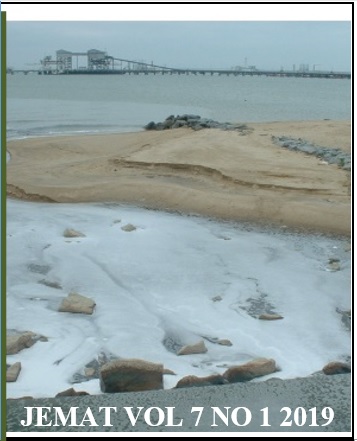Arrhenius Plot Analysis, Temperature Coefficient and Q10 Value Estimation for the Effect of Temperature on the Growth Rate on Acrylamide by the Antarctic Bacterium Pseudomonas sp. Strain DRYJ7
DOI:
https://doi.org/10.54987/jemat.v7i1.468Keywords:
Antarctica; Acrylamide-degrading; temperature; Pseudomonas sp.; Arrhenius plotAbstract
Several models are available to model the effect of temperature on the growth rate of microorganism on substrates. One of the models is Arrhenius and is very popular due to it having few parameters. An apparent activation energy based on the Arrhenius plot on the growth on acrylamide by Pseudomonas sp. strain DRYJ7 on acrylamide is reported for the first time. The bacterium was grown in minimal salts media supplemented with 1000 mg/L of acrylamide as a nitrogen source and glucose as the carbon source. The plot of ln ïm (specific growth rate) against 1/T for growth on acrylamide was carried out spanning the range of temperature from 10 to 35 oC. Regression analysis from 10–20 oC results in an activation energy of 14.96 kJ mol-1. A relative 10 ËšC increase in the surrounding temperature, usually results in doubling the reaction rate, with corresponding Q10 value of 1.8, which is the approximate value for a number of biological reactions. The Q10 values, determined from the Arrhenius plot of 2.17 and a theta value of 1.03 obtained in this work, are within the normal range for many biological values. This is the first time that values for the activation energy, Q10 and theta for the growth of a bacterium on acrylamide is reported.
Downloads
Published
How to Cite
Issue
Section
License
Authors who publish with this journal agree to the following terms:
- Authors retain copyright and grant the journal right of first publication with the work simultaneously licensed under a Creative Commons Attribution License (http://creativecommons.org/licenses/by/4.0) that allows others to share the work with an acknowledgement of the work's authorship and initial publication in this journal.
- Authors are able to enter into separate, additional contractual arrangements for the non-exclusive distribution of the journal's published version of the work (e.g., post it to an institutional repository or publish it in a book), with an acknowledgement of its initial publication in this journal.
- Authors are permitted and encouraged to post their work online (e.g., in institutional repositories or on their website) prior to and during the submission process, as it can lead to productive exchanges, as well as earlier and greater citation of published work (See The Effect of Open Access).


